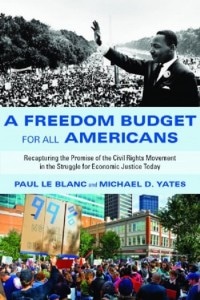 The following essay is adapted by us from our book, Paul Le Blanc and Michael D. Yates, A Freedom Budget for All Americans: Recapturing the Promise of the Civil Rights Movement in the Struggle for Economic Justice Today (New York: Monthly Review Press, 2013).**
The following essay is adapted by us from our book, Paul Le Blanc and Michael D. Yates, A Freedom Budget for All Americans: Recapturing the Promise of the Civil Rights Movement in the Struggle for Economic Justice Today (New York: Monthly Review Press, 2013).**
A “Freedom Budget for All Americans,” published in 1966 by the A. Philip Randolph Institute, demanded that the federal government put in place policies and programs that would eliminate poverty within ten years. Its authors demonstrated with clear and realistic assumptions about government taxes and revenues that this could be easily accomplished. The Budget was a direct descendant of the historic 1963 March on Washington for Jobs and Freedom. The organizers of the March and the architects of the Budget—people like A. Philip Randolph, Bayard Rustin, and Martin Luther King, Jr.—understood that ending poverty, achieving full employment, guaranteeing incomes, winning higher wages, providing good schools, national healthcare, and decent housing would not happen without tremendous struggle, one that challenged not only the federal government but the basic structure of a capitalist economy. Their sensibility was democratic and socialist; it envisioned a society both egalitarian and controlled by the people themselves.
The original Freedom Budget contains a section on the economic plight of Black men, women, and children in the United States. It notes that the civil rights movement was led by black Americans fighting for an end to U.S. apartheid and for political equality with whites. But while they would be the primary beneficiaries of the destruction of Jim Crow, they would also, by making the nation more democratic and its people more equal, improve the quality of life for everyone. Similarly, the Freedom Budget, while aimed at all poor people—black, white, brown, red, and yellow—would benefit black people most. They had the highest unemployment rates, the greatest incidence of poverty, the most substandard housing, the lowest incomes, the poorest health, the least access to social services, the most inferior education. However, the role of black Americans in the Freedom Budget would be not just to fight for themselves but again to act as protagonists in the battle to compel the society to live up to its professed ideals.
There is an absolute analogy between the crusade for civil rights and liberties and the crusade which the “Freedom Budget” represents. This is because the “Freedom Budget” would achieve the freedom from economic want and oppression that is the necessary complement to freedom from political and civil oppression. And just as the progress thus far made on the front of civil rights and liberties has immeasurably strengthened the entire American political democracy, so will the “Freedom Budget” strengthen immeasurably our entire economic and social fabric.
The Negro’s greatest role on both of these fronts is not as a beneficiary, but rather as a galvanizing force. Out of his unique suffering, he has gone a long way toward awakening the American conscience with respect to civil rights and liberties. The debt which the whole nation owes him will be increased many times, as he helps to win the battle against unemployment and poverty and deprivation.[1]
During the strike of Memphis sanitation workers in 1968, which Martin Luther King was so eloquently supporting just before he was murdered, the picketers carried signs that read, “I Am A Man.” The power of this phrase spoke to the demand by these black laborers, whom white America saw as the least of men, that they and all black men and women be treated as full human beings, equal to everyone else and as deserving of a good life as the rest of us. The subtext of the words spoke to the brutal hypocrisy of U.S. society. How could it claim to be free, a model for the world no less, when so many of its people were denied the most fundamental human rights? However, by struggling so valiantly and with immense courage, black America compelled white America to make it part of the nation, with equal political rights. Our black brothers and sisters remade the country, made it more what the propaganda said it was, a land of free and equal people. The United States was made a better place because this exploited and oppressed minority forced Americans to look in the mirror and ask themselves who they really were.
Similarly, the authors of the Freedom Budget said that black Americans should and would be in the forefront of the war to be fought for the right to be free from deprivation. And if they succeeded in achieving the goals set out in the Freedom Budget, they would have taken another step toward making the United States a model for the world. At the same time, they would help end their own cruel and deadly economic conditions.
Despite endorsements from numerous political, labor, religious, civil rights, and education leaders, the Freedom Budget was never implemented. The reasons include the cooptation of black leaders by both political and economic elites, fissures among potential supporters given the failure of most of the Budget’s prime movers to join forces with the burgeoning movement against the War in Vietnam, and an over-reliance on Democratic Party politicians. On top of this, there was the stagnation that took hold of the nation’s economy in the mid-1970s. Still, some of what the Budget proposed came to pass. Health care, housing, and public assistance for the poor improved. Racial minorities won better access to schooling. Unemployment compensation and social security were made more generous. Environmental protection laws were enacted. Poverty fell dramatically.
Sadly, the greater well-being enjoyed by millions of poor and near-poor Americans during the 1960s and 1970s proved short-lived, coming to a halt beginning in the 1980s. Except for a brief period of reversal in the late 1990s, gains made during those earlier decades were not sustained, and for many of those suffering economic want, conditions deteriorated. Nowhere has this more the case than for black people. This is not surprising; if you are on the lowest rung of the economic ladder, you will benefit relatively more when progressive economic policies are enacted, but you will be harmed the most when these end, or worse yet, as is the case today, austerity rules.
Black people saw improvements in their lives in the aftermath of the Civil Rights Movement, notably a sharp decline in poverty. They won access to both better job opportunities and political offices. We now see many black faces on television news shows and in mainstream entertainment. Black CEOs, generals, and presidential advisors no longer surprise us. We even have a black president.
Yet despite undeniable progress, seemingly intractable racial disparities continue to exist. Consider the following summary of the economic condition of contemporary black America, using many of the categories enumerated in the Freedom Budget.
1. Income: In 1947, the ratio of median black family income to white family income was 51.1 percent. In 2010, it was 61.0 percent. After the heroic struggles of the Civil Rights Movement and the enactment of numerous civil rights laws, this seems a small gain, smaller even than the ratio of 61.3 percent in 1967.[2]
2. Wealth: In 2010, the median net worth (all assets, including homes, minus all debts) of black households (a household is not necessarily a family) was $4,900, 5 percent of that of whites, for whom it was $97,000. If we confine our data to median net financial wealth (assets include mutual funds, trusts, retirement and pension funds, etc.), in 2009, black households had $200, while whites had $36,100, for a ratio of black to white of .0056. In 2009, nearly twice as many black households as white had zero or negative net worth. (39.2 versus 20.3 percent).[3]
3. Wages and Jobs: Black workers earn less than their white counterparts; black men, for example, earn less than three-quarters the wages of white men. The black-white earnings ratio is less than one for every level of schooling. Part of this is due to the fact that blacks, no matter their level of schooling, are over represented in jobs with relatively low wages and under- represented in higher-paying jobs. A report from the Economic Policy Institute tells us that “The average of the annual wages of occupations in which black men are overrepresented is $37,005, compared with $50,333 in occupations in which they are underrepresented.” Further, “A $10,000 increase in the average annual wage of an occupation is associated with a seven percentage point decrease in the proportion of black men in that occupation.”[4] Another part of the reason for the relatively low wages of blacks is that they earn less money within the same occupations. A summary of data collected by the Bureau of Labor Statistics shows that “In 2010, median usual weekly earnings of . . . White men ($1,273) working full time in management, professional, and related occupations (the highest paying major occupation group) were well above the earnings of Black men ($957) in the same occupation group.” For women, the numbers were $932 for whites and $812 for blacks. Racial wage discrepancies exist in every occupational category. If instead of specific occupations, we look just at low wage work, we find racial disparities. About one-quarter of all jobs in the United States pay a wage that, for full-time, year-round work, would put a family of four below the poverty level of income. But for jobs held by black workers, this figure is nearly 35 percent.[5]
4. Poverty: In 2010, the incidence of poverty for non-Hispanic whites was 9.9 percent; for Blacks it was 27.4 percent. 13.5 percent of Blacks lived at less than one-half of the poverty level of income. For black children (less than six year old), the incidence of poverty was 45.8 percent; the rate for white children was 14.5 percent.[6]
5. Unemployment: The official unemployment rate has almost always been about twice as high for blacks as for whites. In March 2013, these rates were 13.3 and 6.7 percent respectively. Double-digit unemployment rates are more common than not for black workers, a condition that would be unacceptable if it were true for white workers. In 2011, the underemployment rate (includes involuntary part-time workers and all those marginally attached to the labor force) was 13 percent for whites and nearly 25 percent for blacks.[7]
6. Housing: Homes are the most important form of wealth for most households. Not unexpectedly, there is a racial gap here too. Whites are 25 percent more likely to own homes than blacks. In addition, the current meltdown in housing prices has disproportionately hurt black homeowners. In connection with housing, it is useful to mention the recent study by the Manhattan Institute, which has received a great deal of media attention, that housing segregation has dramatically declined. The authors use a “dissimilarity index” as a measure of segregation and show that this has fallen. An Economic Policy Institute (EPI) evaluation of the study explains: “They find a national dissimilarity (or segregation) rate of about 55 percent for African Americans—in other words, ‘only’ 55 percent of African Americans would now have to move to neighborhoods with more non-blacks in order to evenly distribute the black population throughout all neighborhoods in their metropolitan areas. This is a substantial decline from the segregation level of about 80 percent in 1970.” Against the optimistic gloss that has been put on the Manhattan Institute analysis, the EPI authors make several salient points. First, a 55 percent segregation rate is nothing to brag about, and it will rise now that black homeowners in white neighborhoods have been experiencing so many foreclosures. Second, the dissimilarity index is a somewhat indirect measure of black and white interaction. By another measure, the typical black person lived in a neighborhood that was 40 percent white in 1940; today this has fallen to 35 percent. And even for the dissimilarity index, some of the decline is due to an influx of Asians and Hispanics into black localities, while another part of it is the consequence of the greater economic mobility of the black middle class. Poor blacks have been left behind, stuck in almost totally segregated areas, without jobs as manufacturing left town, and unable to follow jobs to the suburbs. “High poverty” neighborhoods are home to 40 percent of all poor blacks (only 15 percent of poor whites live in such neighborhoods).[8]
7. Life Expectancies and Infant Mortality: There is no reason to expect that, other things equal, one group of people in a country should exhibit different life expectancies and infant mortality rates than another. In 2010, blacks could expect to live four years less than whites. Infant mortality rates are more than double for black than for white women.[9]
8. Prisons and the Criminal Justice System: Here the racial divide is startling. In 2010, 2,226,800 persons were incarcerated in the United States, and another 4,887, 900 were either on probation or parole. So, the United States has a criminal justice system population of over seven million people. Nearly 40 percent of this population is black; more than triple the black share of the U.S. population. At every step in the criminal justice system—arrest, arraignment, legal representation, plea bargaining, jury selection, verdict, sentencing, chance for parole, prospects after imprisonment—blacks fare worse than whites.[10]
In the fifty years since the Freedom Budget was written, the United States has failed miserably to end poverty and deprivation. The black America that made the Civil Rights Movement and developed the Freedom Budget still suffers deplorable economic conditions. This means that the goals of the Freedom Budget are as relevant as ever. Perhaps it is time to construct A New Freedom Budget, patterned after the original but brought up to date to reflect a changed reality. And perhaps it is time once again for black America to rise up, in concert with all of those who are poor and deprived, and demand that the scourge of economic want be ended, once and for all.
Strictly speaking, a Budget consists of sets of numbers, reflecting receipts and expenditures of money. However, it is always the case that principles underlie the data. What might the principles of A New Freedom be? Here are some suggestions:
—Liberty and justice for all: equal rights and equal opportunities, with no exceptions.
—Deepening democracy: politically, socially, economically.
—A commitment to future generations.
—Comprehensive solutions: we reject tokenism and fragmented remedies.
—Harmony with global neighbors.
What should be the objectives of A New Freedom Budget? These cannot be exactly the same as those in the original; economic and social changes have occurred over the past five decades, creating new difficulties for the masses of people that must be addressed. The following goals are not meant to be final, but they are consistent with those of the first Freedom Budget and the fact that today’s nation is not the same as it was in 1966:
1. Full employment.
2. Adequate income for all who are employed.
3. A guaranteed minimum adequacy level of income for those who cannot or should not work.
4. Adequate and safe housing for all.
5. Health care for all.
6. Educational opportunity for all.
7. Secure and expanded transportation infrastructure.
8. Secure and expanded social security.
9. Food security for all.
10. A sustainable environment.
11. Cultural freedom and enrichment for all (arts, parks, sports, recreation).
12. Reduction in the inequality of income and wealth, to ensure the realization of these objectives.
How might these objectives be achieved? Political traction for A New Freedom Budget will require organization around both community self-help efforts and political agitation demanding that the federal government begin to act in the interests of the people. With respect to the first, collective self-help measures, these can build cooperative entities inside the shell of capitalism and generate feelings of power, solidarity, and self-confidence among participants. For example, the OWS encampment in Manhattan’s Zuccotti Park erected a small-scale society, providing themselves with food, sanitation, and housing, while debating and implementing a form of democratic self-government. Remarkably, they did this in the face of severe police repression. In terms of the second kind of organization, political agitation, there are hundreds of examples, from the labor movement to antiwar struggles. Even OWS, which was accused of not having a political agenda, made many demands, including an end to police surveillance and brutality. History suggests, in fact, that collective self-help and political activism go hand-in-hand.
There is good reason to think that black America could once again spearhead the fight for A New Freedom Budget. As the data above tell us, black men, women, and children are still the least of Americans. They have the most to gain from the achievement of the Budget’s goals, and their participation in and leadership of the drive to implement it would once again force the nation to confront the chasm between ideology and reality. And as past collective self-help and political movements make clear, black America has a history replete with concrete achievements. In the 1960s, the Student Nonviolent Coordinating Committee’s (SNCC) Mississippi Freedom Summer Project combined self-help and political action efforts. The voter registration drives were political confrontations with a vicious white state government, aimed not only at winning the right to vote in Mississippi but also to pressure the federal government to enact voting rights legislation. These voting drives were combined with Freedom Schools, in which students were taught traditional subjects like reading and mathematics, as well as black history and constitutional rights. Among black liberation efforts embracing a more nationalist path for struggle, the same kind of dynamic emerged. The Black Panther Party established “survival programs,” such as the Free Breakfast for Children Program and a large number of free services such as “clothing distribution, classes on politics and economics, free medical clinics, lessons on self-defense and first aid, transportation to upstate prisons for family members of inmates, an emergency-response ambulance program, drug and alcohol rehabilitation, and testing for sickle-cell disease.” The Nation of Islam ran schools and daycare services, operated a food distribution network, and established farms.[11] Both groups in their “Ten Point Programs” also demanded that the federal government guarantee full employment, access to land, decent housing, good education, an end to police brutality in black communities, and an end to an unjust criminal justice system.[12] Especially with the Black Panthers, community self-help activities were combined with active political struggles.
Black communities today have ready-made allies to help them win support for A New Freedom Budget. They could be joined by a growing population of oppressed minorities—American Indians and recent immigrants from Mexico, Central and South America, South and Southeast Asia, China, and the Middle East—to form a massive coalition leading all poor and deprived persons, as well as the rest of the working class, in building a society that guarantees to all lives free from want. Our political and economic elites caution patience and say that tremendous progress has been made in making opportunities available to all. This is simply not true. Most of our economic growth has been siphoned off by the very rich, while the lives of the majority of Americans become more insecure and less hopeful every day. We need immediate, radical change, and we must demand this right now.
**Copyright, Truthout.org. Reprinted with permission. This essay appeared originally at http://www.truth-out.org/news/item/18757-black-america-and-a-new-freedom-budget
Notes
[1] A. Philip Randolph Institute, A “Freedom Budget” for All Americans: Budgeting Our Resources, 1966-1975 to Achieve “Freedom from Want” (New York: A. Philip Randolph Institute, 1966), 19-20.
[2] Lawrence Mishel, Josh Bivens, Elise Gould and Heidi Shierholz, The State of Working America, Chapter 2, “Income,” available at http://stateofworkingamerica.org/subjects/income/?reader.
[3] Ibid., Chapter 6, “Wealth,” available at http://stateofworkingamerica.org/subjects/wealth/?reader
[6] Lawrence Mishel, Josh Bivens, Elise Gould and Heidi Shierholz, The State of Working America, Chapter 7, “Poverty,” available at http://stateofworkingamerica.org/subjects/poverty/?reader
[7] See http://www.bls.gov/news.release/empsit.nr0.htm and http://stateofworkingamerica.org/charts/underemployment-by-race-and-ethnicity/
[9] http://www.ecology.com/2013/04/01/us-life-expectancy-mortality-rates/, and for infant mortality, http://www.cdc.gov/mmwr/preview/mmwrhtml/mm6205a6.htm
[10] See http://www.motherjones.com/politics/2011/07/job-crisis-black-unemployment-rates?page=2, and http://bjs.gov/content/pub/pdf/cpus10.pdf.
[11] Bruce Watson, Freedom Summer: The Savage Season of 1964 That Made Mississippi Burn and Made America a Democracy (New York: Penguin, 2010); on the programs of the Black Panther Party, see http://en.wikipedia.org/wiki/Black_Panther_Party#Survival_programs, and Joshua Bloom and Waldo E. Martin, Jr., Black against Empire: The History and Politics of the Black Panther Party (Berkeley, CA: University of California Press, 2013); on the Nation of Islam’s substantial economic plan based on collective self-help http://www.finalcall.com/artman/publish/Columns_4/article_6680.shtml;
[12] Joshua Bloom and Waldo E. Martin, Jr., Black against Empire: The History and Politics of the Black Panther Party, Kindle Edition, 70-71.




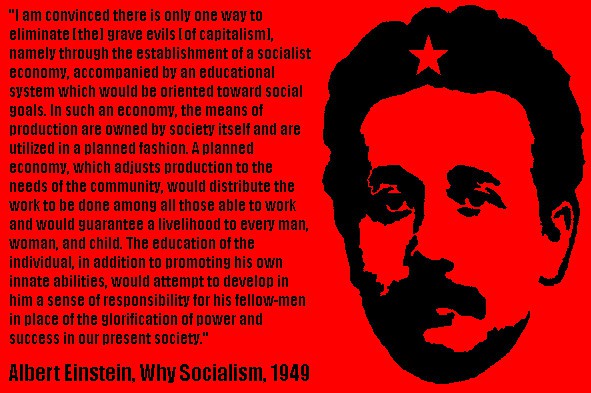
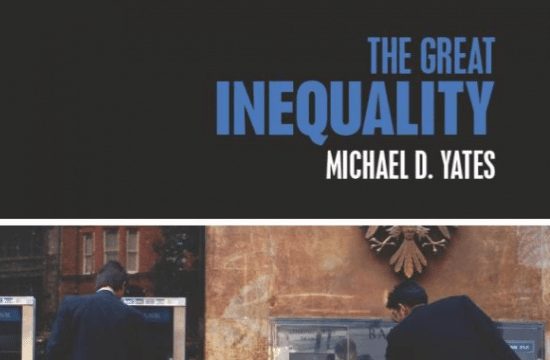
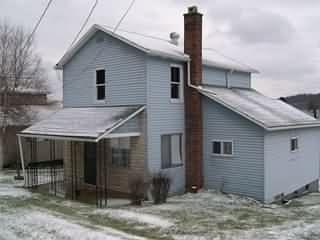
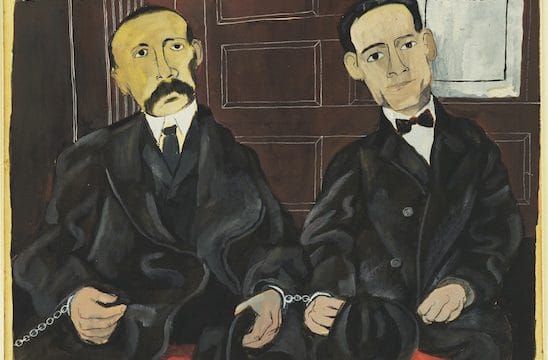
Comments